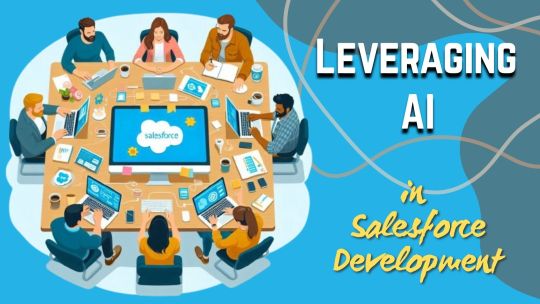#Automated Migrations:
Explore tagged Tumblr posts
Text
WP Engine is a well-known managed WordPress hosting provider.
It offers a range of features and services tailored specifically for WordPress websites, making it a popular choice among businesses, bloggers, and developers who seek reliable, high-performance hosting solutions.

#Managed WordPress Hosting:#security#and reliability.#automated updates#and staging environments.#Genesis Framework and StudioPress Themes:#Access to the Genesis Framework for building fast#secure#and SEO-friendly websites.#Includes over 35 StudioPress themes for customization and design flexibility.#Global Edge Security:#Advanced security features including DDoS protection and Web Application Firewall (WAF).#Managed threat detection and prevention.#Content Performance:#Tools and analytics to measure and optimize content performance.#Helps improve site speed and SEO rankings.#Dev#Stage#Prod Environments:#Separate development#staging#and production environments for better workflow management.#Allows for testing changes before pushing them live.#Automated Migrations:#Easy migration tools to transfer existing WordPress sites to WP Engine.#Assisted migrations for a smoother transition.#24/7 Customer Support:
0 notes
Text
AVM Global Solutions Marketo Marketing Consulting Services offer unparalleled expertise to help businesses unlock the full potential of their marketing automation efforts. With years of experience and in-depth knowledge of the Marketo platform, we provide tailored solutions that drive measurable results.

#Marketo Consulting Services#Marketo Consultants in the US#B2B Marketing Automation Consulting#Marketo Migration Services
2 notes
·
View notes
Text

Enhance contact center performance with the DORA framework
Running a contact center can be a real juggling act. Between managing customer queries, keeping your team on track, and making sure everything runs smoothly, things can get pretty hectic. The last thing you need is a system failure or unexpected disruption that throws everything off course.
That’s where the DORA framework comes in. It’s designed to help businesses, including contact centers, stay resilient and keep operations flowing without a hitch. By focusing on risk management, it helps ensure that your critical systems are secure and running smoothly, so you can focus on what matters most—your customers.
Adopting the DORA framework isn’t just about avoiding disasters; it’s about making sure your contact center is always performing at its best. Let’s dive into how DORA can boost your efficiency and make your team’s job a whole lot easier.
Why choose Blackchair for DORA compliance in contact centers?
At Blackchair, we specialize in helping contact centers achieve DORA compliance for operational resilience. Our team works closely with you to ensure your systems are secure, efficient, and always available. We proactively identify risks and inefficiencies, offering actionable insights to enhance performance and minimize disruptions. Let us manage the compliance details while you focus on delivering exceptional customer service and driving business growth.
The DORA (Digital Operational Resilience Act) is a regulatory framework introduced by the European Union aimed at ensuring that financial entities, including contact centers, maintain operational resilience in the face of digital disruptions. DORA focuses on reducing risks to operational activities caused by technology, cyber threats, and system failures. It sets clear standards for risk management, incident reporting, and continuity planning to protect critical systems and services.
Discover how building a robust digital resilience strategy can enhance your CX optimization center operations. Learn more about how we can help improve system stability, minimize disruptions, and ensure smooth, uninterrupted service for your customers.
#CX optimization#CCaaS migration#CCaaS Configuration#Information Technology & Services#CX DevOps Automation#Contact centre consultancy
0 notes
Text

Strengthen contact centers with digital operational resilience strategies
Building resilience in a CX center isn’t easy. Complex systems and tools make it difficult to pinpoint vulnerabilities while evolving regulations add extra layers of pressure. Many CX centers also struggle with limited visibility into operational risks, which leaves them reacting to issues rather than preventing them. And let’s not forget the customer impact—any downtime, no matter how brief, can lead to frustrated customers, lost revenue, and reputational damage.
Why prioritize DORA for your CX center?
Building DORA compliance ensures your CX center stays secure, efficient, and prepared for disruptions. By proactively identifying risks and strengthening system stability, you can minimize downtime and maintain seamless operations. A strong resilience strategy not only protects your CX optimization center from cyber threats and compliance challenges but also enhances customer trust and long-term growth. Stay ahead with a proactive approach to resilience.
A digital operational resilience strategy is a proactive approach to ensuring a contact center can withstand, adapt to, and recover from digital disruptions like cyberattacks, system failures, or regulatory changes. It involves risk management, continuous monitoring, secure infrastructure, and compliance measures to minimize downtime and maintain seamless operations.
Discover how to build digital operational resilience and keep your business running smoothly through any disruptions Learn key strategies to stay ahead.
#CX DevOps Automation#Contact centre consultancy#telecommunications solutions#Business consultant#Information Technology#CX solutions#CX optimization#CCaaS migration#CCaaS Configuration
0 notes
Text
Top Trends in Azure Managed Services: What Businesses Need to Know in 2025
Azure Managed Services continue to evolve, offering businesses advanced solutions to optimize their cloud infrastructure. Staying informed about current trends is essential for leveraging these services effectively.
1. Integration of Artificial Intelligence (AI) and Machine Learning (ML)
AI and ML are becoming integral components of Azure Managed Services. Businesses are utilizing these technologies to automate processes and enhance data analysis capabilities. This integration allows for more efficient operations and informed decision-making. citeturn0search0
2. Adoption of Hybrid Cloud Solutions
Hybrid cloud strategies are gaining traction, enabling organizations to combine on-premises resources with cloud services. Azure’s hybrid capabilities, facilitated by tools like Azure Arc, provide seamless management across diverse environments, offering flexibility and scalability. citeturn0search2
3. Emphasis on Enhanced Security Measures
With increasing cyber threats, Azure Managed Services are prioritizing robust security protocols. Implementing advanced threat protection and adopting a zero-trust security model are critical to safeguarding data and maintaining compliance. citeturn0search4
4. Expansion of Edge Computing and IoT Integration
The rise of edge computing and the Internet of Things (IoT) is influencing Azure’s service offerings. By processing data closer to its source, businesses can achieve reduced latency and improved performance, enhancing real-time analytics and operational efficiency. citeturn0search4
5. Growth in Serverless Computing Adoption
Serverless computing models, such as Azure Functions, are gaining popularity. They allow developers to focus on code execution without managing underlying infrastructure, leading to cost savings and scalability. citeturn0search4
6. Integration of DevOps Practices
Incorporating DevOps methodologies within Azure Managed Services streamlines application development and deployment. This integration fosters collaboration between development and operations teams, resulting in faster delivery and improved software quality. citeturn0search8
7. Advancements in Azure API Management Service
Azure API Management Service is evolving to support modern application architectures. It enables secure, scalable, and reliable API integrations, facilitating seamless communication between services and enhancing application functionality.
8. Utilization of Azure Managed Database Services
Azure’s managed database services offer automated maintenance, scaling, and security features. These services allow businesses to focus on application development without the overhead of database management.
9. Role of Azure Managed Service Providers
Partnering with Azure Managed Service Providers (MSPs) offers businesses specialized expertise in managing and optimizing Azure environments. MSPs assist in navigating complex cloud infrastructures, ensuring efficient and secure operations.
10. VBeyond Digital’s Expertise in Azure Managed Services
VBeyond Digital specializes in providing tailored Azure Managed Services. Their team of experts assists businesses in implementing and managing Azure solutions, ensuring alignment with organizational goals and maximizing return on investment.
Staying abreast of these trends in Azure Managed Services enables businesses to harness the full potential of Azure’s offerings, driving innovation and operational excellence.
0 notes
Text
Cloud Migration Service: A Seamless Transition to the Cloud
In today's digital landscape, businesses are increasingly adopting cloud solutions to enhance scalability, flexibility, and cost efficiency. A Cloud Migration Service plays a crucial role in ensuring a smooth transition from on-premises infrastructure to cloud environments, minimizing risks and maximizing operational benefits.
What is a Cloud Migration Service?
A Cloud Migration Service involves the process of transferring data, applications, and IT resources from traditional systems to a cloud-based infrastructure. These services provide businesses with the necessary tools, strategies, and expertise to migrate efficiently while maintaining security and compliance.

Benefits of Cloud Migration Services
1. Enhanced Scalability
With cloud solutions, businesses can scale resources up or down based on demand, reducing unnecessary costs and ensuring optimal performance.
2. Cost Efficiency
Cloud migration eliminates the need for expensive on-premises hardware and maintenance, enabling businesses to pay only for what they use.
3. Improved Security
Leading cloud providers implement robust security measures, including encryption, access controls, and compliance frameworks, to protect sensitive business data.
4. Disaster Recovery and Business Continuity
Cloud migration ensures data redundancy and quick recovery solutions, minimizing downtime and enhancing business resilience.
Steps Involved in a Cloud Migration Service
1. Assessment and Planning
A thorough evaluation of existing IT infrastructure helps identify workloads best suited for migration and develop a strategic roadmap.
2. Selecting the Right Cloud Model
Organizations can choose from Public, Private, Hybrid, or Multi-Cloud environments based on their business needs.
3. Executing the Migration
A phased migration approach minimizes disruptions, ensuring a smooth transition of applications and data.
4. Testing and Optimization
Post-migration testing is crucial to ensure performance, security, and compliance are maintained in the new cloud environment.
Overcoming Common Cloud Migration Challenges
Data Security Risks: Implementing encryption and access controls.
Application Downtime: Adopting a phased or hybrid migration strategy.
Cost Management: Utilizing cloud cost optimization tools.
Compatibility Issues: Assessing and refactoring applications for cloud readiness.
Choosing the Right Cloud Migration Service Provider
When selecting a Cloud Migration Service provider, businesses should consider:
Expertise in cloud platforms like AWS, Azure, or Google Cloud.
Security and compliance certifications.
Scalability options and 24/7 support.
Conclusion
Migrating to the cloud can be a game-changer for businesses looking to innovate and grow. A professional Cloud Migration Service ensures a hassle-free transition, enhanced security, and cost-efficient operations. With the right strategy and expert guidance, organizations can unlock the full potential of cloud computing for a competitive edge in the digital era.
#Cloud Migration service#Cloud Migration and Modernization service#Infrastructure as a Service (IaaS)#Cloud Infrastructure automation and monitoring#Serverless Computing#Disaster Recovery automation service
1 note
·
View note
Text
When re-building your application, Which option do you have that gives optimum performance in Cloud?
#technology#automation#aws cloud#gitlab#aws#google cloud#microsoft azure#startup#cloud migration#cloud services#cloud service provider#cloud security#startups#devops#devopsengineer#devsecops
0 notes
Text

Benefits Of DevOps Automation Tools For Seamless CX Upgrades
Customer experience (CX) is a rapidly evolving industry, with 80% of companies identifying DevOps as a key factor in scaling service quality. Integrating DevOps automation into CX operations brings substantial benefits, allowing teams to keep pace with customer demands, launch new features quickly, and resolve issues before they affect service. By minimizing manual intervention, DevOps automation tools improve productivity and enable CX teams to focus on creating seamless experiences across every customer interaction.
CX is inherently fast-paced and complex. Platforms require ongoing updates, precise configuration, and high scalability to meet dynamic customer needs. With automation, companies can unify operations, reduce deployment errors, and increase service uptime, setting the stage for a consistently high-quality customer journey. Below, we dive into the specific benefits DevOps automation can offer CX teams.
Why choose Blackchair Symphony for DevOps automation in CX?
At Blackchair, we know that successful DevOps automation in CX requires more than just implementing a standard set of tools. Each CX environment has specific demands, from CCaaS configuration to the need for rapid scalability and flawless performance. Our experts bring deep experience in selecting and integrating the ideal automation tools that fit your unique CX requirements, empowering your team to achieve reliable deployments, seamless scaling, and robust service reliability.
With comprehensive support across strategy, execution, and ongoing optimization, we handle the intricacies of automation so your team can prioritize delivering memorable, high-quality customer experiences at every touchpoint.
#DevOps Automation#CX Upgrades#CX migration#CCaaS environments#CX Automation#CX solutions#CCaaS platforms
0 notes
Text

Boost Efficiency with Cloud Configuration Management
Managing a contact center today isn’t what it used to be. It’s fast-paced, high-stakes, and essential to a brand’s reputation. But as customer expectations grow, so does the complexity of running an effective contact center. Agents are juggling multiple channels, managers are handling an ever-changing array of systems, and downtime is not an option.
That’s where cloud configuration management for CCaaS comes in. Imagine being able to centralize all those moving parts, automate the repetitive stuff, and focus more on what actually matters—connecting with customers. Automated CCaaS configuration tools help you do exactly that by turning a patchwork of processes into a seamless, flexible system. With the right configuration setup, you can cut down on manual work, keep everything running smoothly, and make sure your contact center is ready to adapt as your business grows.
Why Choose Blackchair for automated cloud configuration management for CCaaS?
At Blackchair, we understand that every contact center is unique, with its own set of challenges and opportunities. Our CCaaS configuration solutions are designed to simplify your daily operations while enhancing overall performance and security. With our technology, your team gains the power to handle more volume, resolve issues faster, and deliver a level of service that keeps customers coming back.
From set-up to ongoing support, we’re here to help you create a contact center that runs like a well-oiled machine, no matter how complex or high-pressure the environment is.
#cloud configuration#CCaaS configuration#cloud configuration management#DevOps Automation#CCaaS environments#CX migration
0 notes
Text

Cloud Migration Experts For Seamless Digital Transformation
Discover how by transforming cloud transitions into growth opportunities, migration experts handle the complexity so you can focus on delivering exceptional customer experiences.
Cloud migration is no longer just an IT upgrade; it’s a strategic pivot that can redefine how businesses engage, grow, and succeed. Cloud migration experts specialize in making this transformation smooth, secure, and geared for lasting impact. From empowering flexibility in operations to unlocking new levels of scalability, the benefits are substantial—if done right.
For many organizations, the right approach to cloud migration goes beyond moving workloads; it requires strategic planning, foresight, and technical expertise. With years of experience in cloud-based transitions for diverse industries, migration experts guide businesses through every stage, ensuring not just a smooth migration but an enhanced foundation for customer engagement and innovation.
Why Blackchair’s cloud migration experts?
At Blackchair, we understand that cloud migration isn’t a “one-size-fits-all” solution. Every business has unique operational needs, customer expectations, and market pressures.
0 notes
Text

Benefits Of DevOps Automation Tools For Seamless CX Upgrades
Customer experience (CX) is a rapidly evolving industry, with 80% of companies identifying DevOps as a key factor in scaling service quality. Integrating DevOps automation into CX operations brings substantial benefits, allowing teams to keep pace with customer demands, launch new features quickly, and resolve issues before they affect service. By minimizing manual intervention, DevOps automation tools improve productivity and enable CX teams to focus on creating seamless experiences across every customer interaction.
CX is inherently fast-paced and complex. Platforms require ongoing updates, precise configuration, and high scalability to meet dynamic customer needs. With automation, companies can unify operations, reduce deployment errors, and increase service uptime, setting the stage for a consistently high-quality customer journey. Below, we dive into the specific benefits DevOps automation can offer CX teams.
Why choose Blackchair Symphony for DevOps automation in CX?
At Blackchair, we know that successful DevOps automation in CX requires more than just implementing a standard set of tools. Each CX environment has specific demands, from CCaaS configuration to the need for rapid scalability and flawless performance. Our experts bring deep experience in selecting and integrating the ideal automation tools that fit your unique CX requirements, empowering your team to achieve reliable deployments, seamless scaling, and robust service reliability.
With comprehensive support across strategy, execution, and ongoing optimization, we handle the intricacies of automation so your team can prioritize delivering memorable, high-quality customer experiences at every touchpoint.
0 notes
Text
Purecode | The use of automated tools like ‘ts-migrate’
The use of automated tools like ‘ts-migrate’ can facilitate the transition of a JavaScript codebase to TypeScript, streamlining the integration process. To maintain code integrity when incorporating TypeScript, liberal use of type annotations is crucial as they provide documentation and assist with error-checking. However, a significant challenge when transitioning to TypeScript is the requirement to compile the code to JavaScript, since browsers cannot execute TypeScript directly.
#automated tools#‘ts-migrate’#purecode#purecode ai company reviews#purecode software reviews#purecode ai reviews#purecode reviews#purecode company#JavaScript codebase to TypeScript
0 notes
Text

Exploring the benefits and strategies for customer channel migration
Customer channel migration is the process of transitioning interactions from one communication channel to another, ensuring smoother customer journeys. This process allows businesses to better align with customer preferences and optimize CX across various touchpoints.
With 70% of customers expecting any agent they interact with to have the full context of their past interactions, omnichannel communications are now essential. By migrating to CCaaS, businesses can easily implement an omnichannel approach, providing seamless transitions between channels, such as from email to phone, while maintaining full visibility of the customer journey. This results in improved customer satisfaction and more efficient operations.
Seamlessly transitioning between channels isn’t just about saving time; it’s about delivering a consistent, quality experience. As businesses move into a CCaaS environment, optimizing channel ligration is key to success.
Accelerate your CCaaS migration with Clarity and elevate customer satisfaction
Clarity by Blackchair significantly improves the CCaaS migration process by automating critical steps and reducing the manual discovery burden. It accelerates CX migration by 25%, and shortens the discovery phase by 50%, allowing businesses to transition to CCaaS environments faster and more efficiently.
This faster transition means you will be able to automate channel migration processes within the CCaaS operating environment, ensuring that customer interactions are consistently handled across all channels—ultimately leading to improved customer satisfaction and operational efficiency.
0 notes
Text

Unlocking cloud migration benefits for customer-centric enterprises
For businesses at the forefront of digital transformation, the shift to the cloud is not just an IT upgrade—it’s a critical strategic move. The migration to cloud-based infrastructure enables businesses to re-architect their customer engagement strategies with increased agility, robust scalability, and an unprecedented capacity for innovation.
The real question isn’t why you should migrate to the cloud—it’s why not. Companies entrenched in legacy systems face more than operational inefficiencies; they risk falling behind the curve in delivering dynamic customer experiences. And for customer-centric enterprises, cloud migration benefits offer the competitive edge necessary to thrive in today’s hyper-connected marketplace.
Experience cloud migration benefits with Blackchair Clarity
If your business is ready to capitalize on the power of the cloud, it’s crucial to start with a well-thought-out migration strategy, tailored to customer experience transformation. Moving your contact center to the cloud requires a deep understanding of both your infrastructure and your customer engagement roadmap.
At Blackchair, we specialize in guiding enterprises through seamless CCaaS migration, ensuring that you transition to the cloud efficiently and unlock the full value of cloud-native customer experience platforms.
0 notes
Text

Leveraging AI in Salesforce Development
Artificial Intelligence (AI) is revolutionizing Salesforce development by infusing intelligence into traditional CRM processes. AI allows Salesforce to evolve from a static data management platform into a dynamic, insight-driven system that can predict, recommend, and automate key functions. With AI, Salesforce development is now more about building solutions that are not just reactive but proactive.
Know more at: https://www.cyberswift.com/blog/leveraging-ai-in-salesforce-development/
#generative ai in salesforce#salesforce ai cloud#salesforce einstein gpt#ai-powered crm solutions#bill cipher#salesforce automation with ai#predictive analytics in salesforce#ai-driven customer insights#ai-enhanced salesforce workflows#salesforce lightning and ai integration#chatbots and salesforce crm#salesforce consulting services#salesforce crm solutions#custom salesforce development#salesforce lightning development#salesforce app development#salesforce api integration#salesforce cloud services#salesforce automation solutions#salesforce migration services#salesforce support and maintenance#low-code salesforce development#ai-powered salesforce solutions#iot integration with salesforce#salesforce blockchain integration
1 note
·
View note
Text

The future Of CX with cloud-native data platforms
In today’s digital age, CX is more important than ever with customers expecting fast, reliable, and personalized services. This means that businesses need to stay on their toes and address these changes in the CX landscape proactively if they want to remain competitive.
Businesses understand this fact too—and it is clear with the shift towards cloud-native data platforms. In fact, the cloud-native software market was valued at approximately US$ 5.8 billion in 2023 and is projected to grow to US$ 46.88 billion by 2030. It is revolutionizing how companies manage CX by offering scalability, flexibility, and integration capabilities that were previously unheard of.
This article will provide insights into how these platforms can transform customer interactions and what the future holds for businesses that embrace this technology. Let’s dive in.
The rise of cloud-native data platforms
Cloud-native platforms are built from the ground up to accentuate the best parts of cloud infrastructure—unmatched scalability, resiliency, and agility.
In addition, cloud-native platforms can make use of microservices, containers, and dynamic orchestration to swiftly adapt to customer demands and market trends.
Cloud-native platforms can offer continuous integration and delivery (CI/CD), which is crucial for faster deployments, easier rollbacks, reduced costs, and better visibility across development—so you can ensure customer-facing applications remain cutting-edge.
Elevate your CX strategy with cloud-native integration
The integration of cloud-native data platforms is really raising the bar for CX. They give businesses the power to offer quick, tailored, and top-notch services. Looking forward, businesses that jump on board with these platforms are set to take the lead in keeping customers happy and dominating the market. So, why not seize the opportunity with cloud-native data platforms to shake up your CX strategy? Opting for CCaaS migration might just be the spark for a fresh wave of customer interaction and business creativity.
0 notes